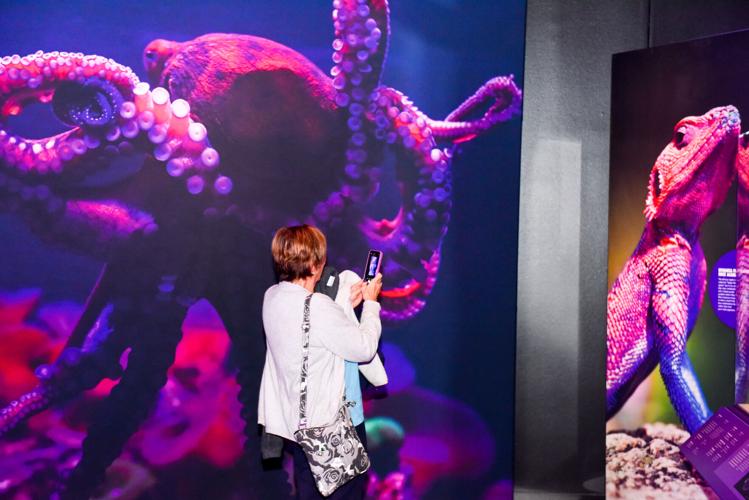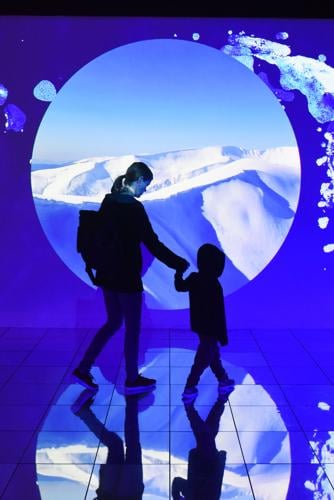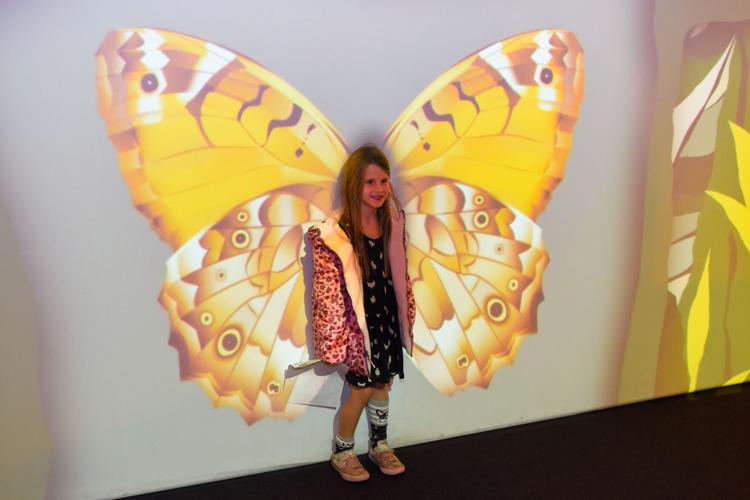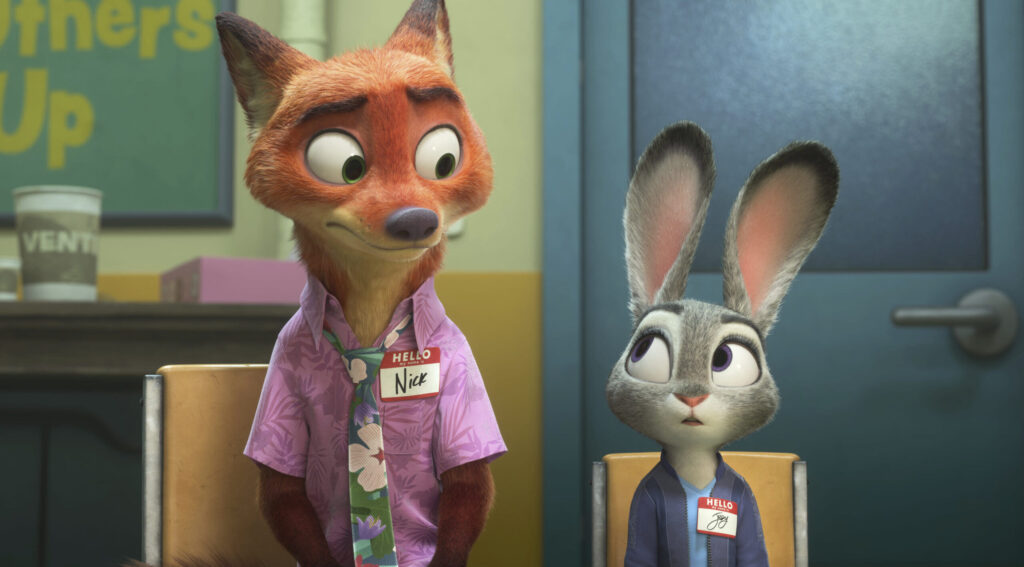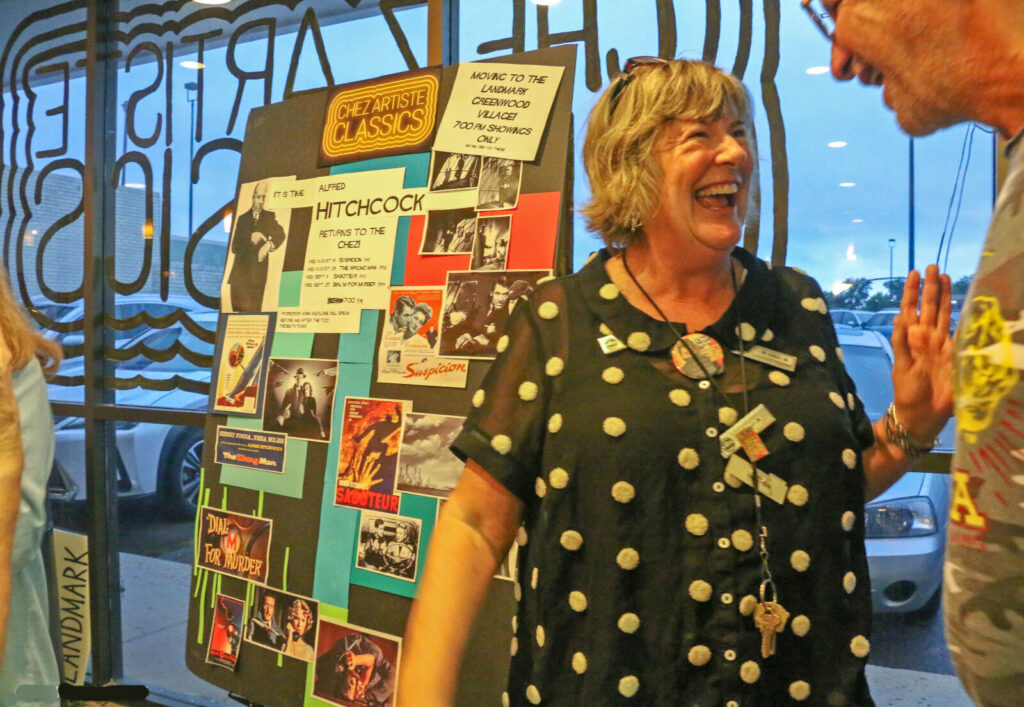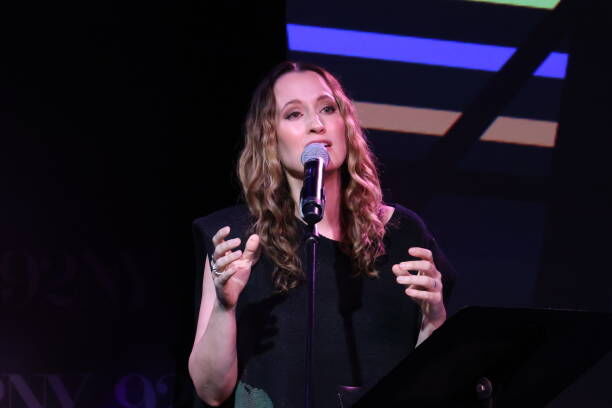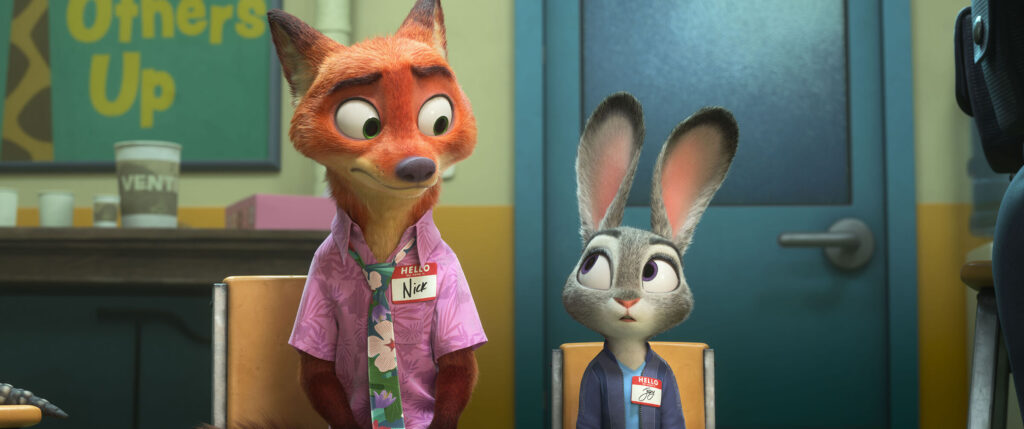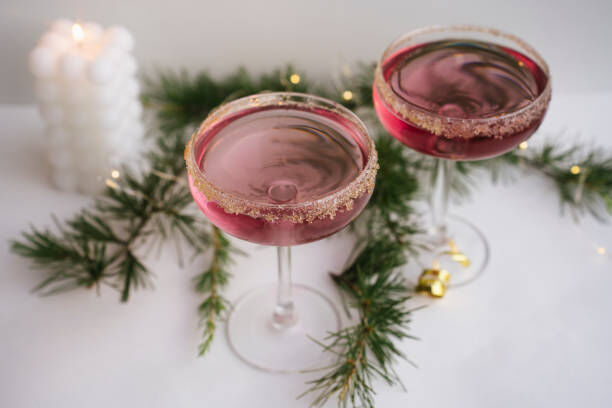Mother Nature’s coloring book open at science museum
The full-spectrum palette of Mother Nature’s paint box is on display in “Wild Color,” a temporary exhibit now at the Denver Museum of Nature and Science (DMNS).
The show, created by Chicago’s Field Museum, was augmented by DMNS to draw attention to the Mile High City’s status as one of the planet’s rare areas for natural hybridization of several species. The local species naturally hybridized include; the cutthroat trout; Colorado’s state fish; the Colorado columbine, the state flower; and northern flickers, a bird species.
“We live in a very unique place here in Denver. In this country as a whole, we have just a tiny band where we see these hybrids,” said Kelsi Cowan, a DMNS educator.
“Wild Color” also sheds limelight on one of Colorado’s most colorful natural land formations: the 58-million-year old striped rock outcroppings known as the Paint Mines located southeast of Denver.
The exuberant exhibit presents vividly colored preserved butterflies, flamboyant birds and lustrous beetles, together with flashy gems and iridescent seashells, phosphorescent minerals and richly hued plants that make “Wild Color” a feast for the eyes of all ages. The enchanting show, in part a scientific immersive riff on Meow Wolf, is free with general admission and runs through April 4, 2024, in the 7,000-square-foot Anschutz Gallery.
The color of life
“We are all part of nature, and color is intrinsic to our daily lives. This exhibition invites us to enjoy [color] and seeks to inspire our visitors, as well,” said the DMNS Lead Exhibit Designer Noelia Medina. “I love color research and, as a designer, inspiration from nature is always present in my work.”
The bilingual exhibit is billed as: “an educational journey into the science of colors in nature, ensuring a highly visually and mentally rewarding experience for visitors.”
“It’s a collection-heavy exhibit,” Cowan said. “I love that it’s showcasing different specimens from all over the world. The Field couldn’t send all of their collection from their exhibit, but we’ve enhanced the exhibit with our DMNS collection.”
DMNS added a scavenger hunt for kids as another enhancement.
“Because this exhibit was made during COVID at the Field Museum, unfortunately they didn’t have as many hands-on aspects,” said Cowan. “We wanted littles be able to take something and go through the exhibit more thoughtfully.”
Roy G. Biv
Poetry sets the tone for the various color sections. The kaleidoscopic exhibit progresses through the familiar Roy G. Biv (red, orange, yellow, green, blue, indigo, violet) acronym for the visible color spectrum, beginning with showy red.
Cowan pointed out crimson feathers as she said: “Red can attract a mate, as with birds — some of the most colorful creatures that we have on Earth. But, also, red can be a warning. We have a frog that shows red to signal ‘I am poisonous please don’t eat me or you’re going to regret it’.”
The red room also includes taxidermy specimens of a red fox, a red squirrel and a display about red-headed human beings.
“Red-haired humans are rare — only one to two percent of the population,” Cowan said.
For selfies and Instagram moments, the room features a scarlet velvet throne.
“We have four or five different photo opportunities in the exhibit,” Cowan said. “There’s a beautiful photo opportunity to become a butterfly. Or you can sit in a macro environment of yellow dandelions.”
Walking through a rainbow
Mimicking a rainbow, the red room gives way to juicy orange tints and shades.
“The primary colors have larger rooms, and the transitional colors are smaller,” Cowan said. “Each color has a different sound, so it’s more immersive.”
The orange section features more dazzling birds and butterflies, pastel orange seashells and glowing carrot-colored lights.
The yellow portion of the exhibit focuses on bees.
“One message of yellow is that it can be seen. For insects, especially pollinators, bright color entices pollinators to come and visit,” Cowan said. “And bees and wasps can see ultraviolet, almost like a landing strip.”
The yellow section also addresses melanin, the chemical that dictates human complexions.
“These are skin tones you’d see across the world. As UV light reaches Earth’s surface, that translates to average skin tone,” said Cowan.
Primary yellow blends into to another secondary color predominant in nature: green.
“The hidden message of green is camouflage,” said Cowan. “We see a lot of green beetles and birds and other things that try to hide out in tree canopies.”
The fresh green gallery displays various leaves from throughout the world. A photographic wall mural lends the sense of a verdant jungle.
“These big vibrant pictures make you feel overall small, immersing you,” Cowan said.
Feeling blue
Though Planet Earth appears mostly blue, given the oceans and the skies that appear blue, this primary color is uncommon in the natural world.
“Although it’s a unique color, you can find blue in nature,” Cowan said. “One of the top places is with birds.”
She noted not only striking blue plumage, but also the turquoise blue of robin’s eggs. The blue section of the exhibit also features a blue marlin model and an enormous photograph of a blue whale.
Medina said: “If I have to choose my favorite part, I think it is the Blue Room because it conveys peace and reminds me a lot of the wonders of my Argentine Patagonia.”
The final secondary color of the visible spectrum, violet, spotlights minerals with the capacity to glow under black light. With the press of a button, fluorite, opal and calcite display otherworldly glowing hues resulting from natural phosphorescence.
Creating palettes
“In our finale room, we combine different color ideas,” Cowan said.
An interactive activity allows visitors to create hybrids of the three Colorado species with overlaid plexiglass shapes.
“Are they accurate? No, but it’s all about fun,” Cowan said as children earnestly layered shapes to create multicolored columbines, trout and flickers.
A cart staffed by volunteers presents natural dyes with lavish pigments from plants and minerals.
Black and white also figure into the exhibit, which displays bright white owls and albino squirrels to demonstrate genetic mutations that cause lost pigmentation. And the exhibition illustrates species that change color according to seasons, notably the ptarmigan.
CMYK Wall
And to educate visitors about colors that make up white light, an ethereal interactive installation known as a CMYK wall shows the breakdown into cyan, magenta, yellow and black.
“Guests can grab pieces of plexiglass and hold them in front of the white light,” Cowan said.
For exhibit designer Stephen Root, this installation tops the show.
“My favorite part of the project was working on the CMYK Wall,” Root said. “The objects we made for the activity show the magic of light through multicolored shadows. It totally bends the mind.”
The human mind is affected by color, a fact frequently capitalized upon by artists, designers and marketing experts.
“A short video that wraps up the exhibit talks about hidden messages,” Cowan said, “as well as the emotions colors can provoke for humans.”






